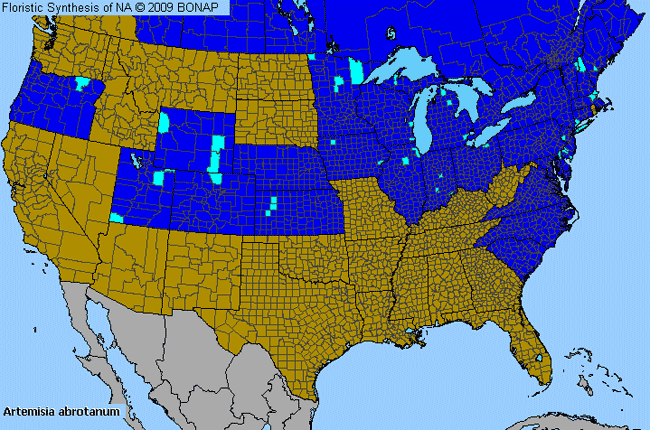Southern Wormwood (Artemisia abrotanum)

Southern Wormwood Species Description

These plants are from foreign areas (those that occur outside of North America north of Mexico) that have been released intentionally or unintentionally. Plants that have been disseminated or escaped as a result of human activity, and become established somewhere within the United States, Canada or Greenland.
Allergenicity: Southern Wormwood (Artemisia abrotanum) is a severe allergen.
Pollination: Occurs in following seasons depending on latitude and elevation: Spring to Fall.
Angiosperm - Flowering Dicot: Plants in this group have two embryonic leaves (dicotyledons). Examples of dicotyledons are beans, buttercups, oaks, sunflowers, etc.
Shrub: A woody plant smaller than a tree, and usually with several stems from the same root.
Weed: Any plant growing in cultivated ground to the injury of the crop or desired vegetation, or to the disfigurement of the place; an unsightly, useless, or injurious plant.
Perennial: Living for many years.
Woody Stem: Non-herbaceous. Lignified.
Evergreen: Retaining leaves throughout the year including changing seasons.
Southern Wormwood Species Usage

Pharmacological: Used in medicine or pharmacological research.
Related Links

More Southern Wormwood (Artemisia abrotanum) imagesby Jessie M. Harris from BONAP











